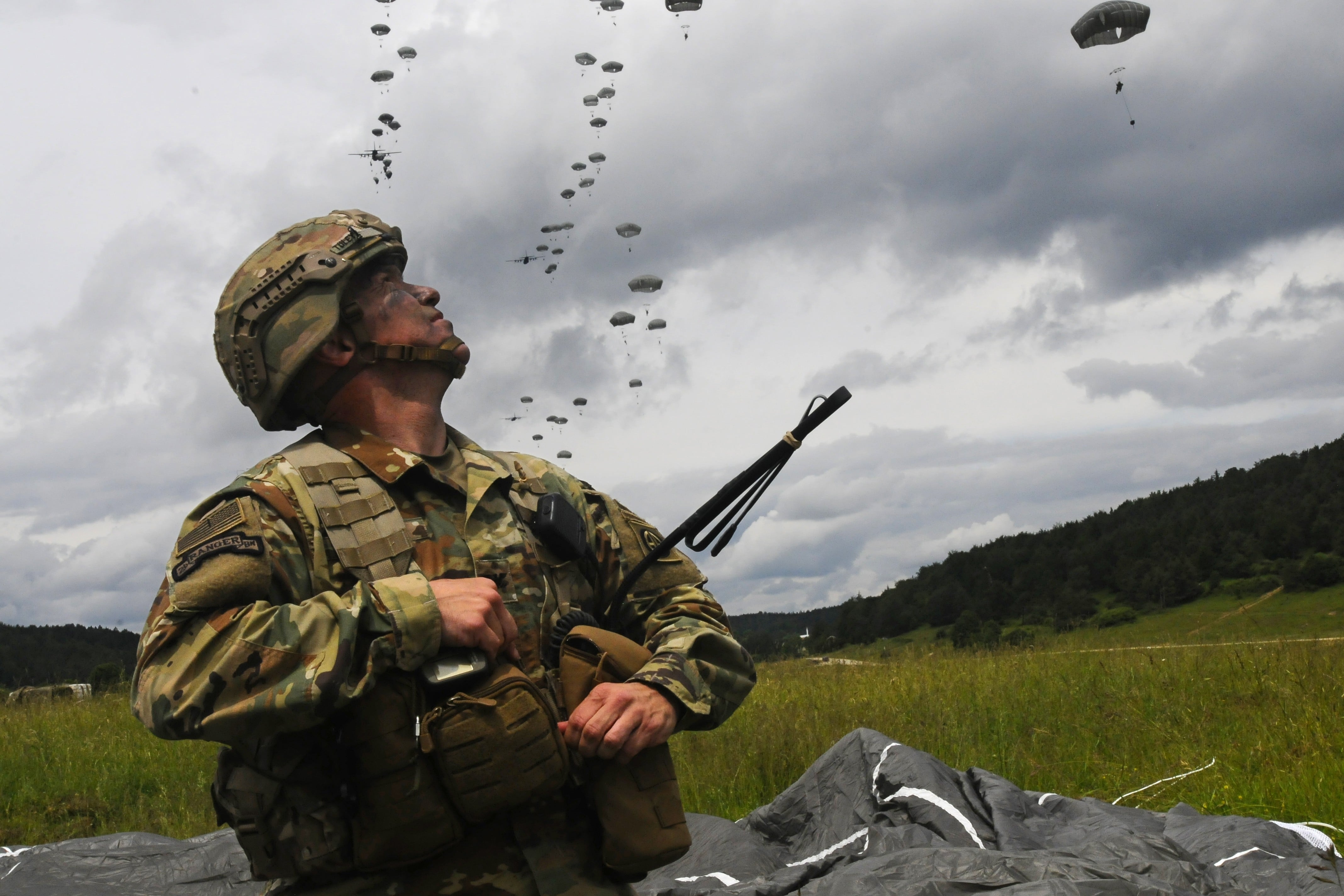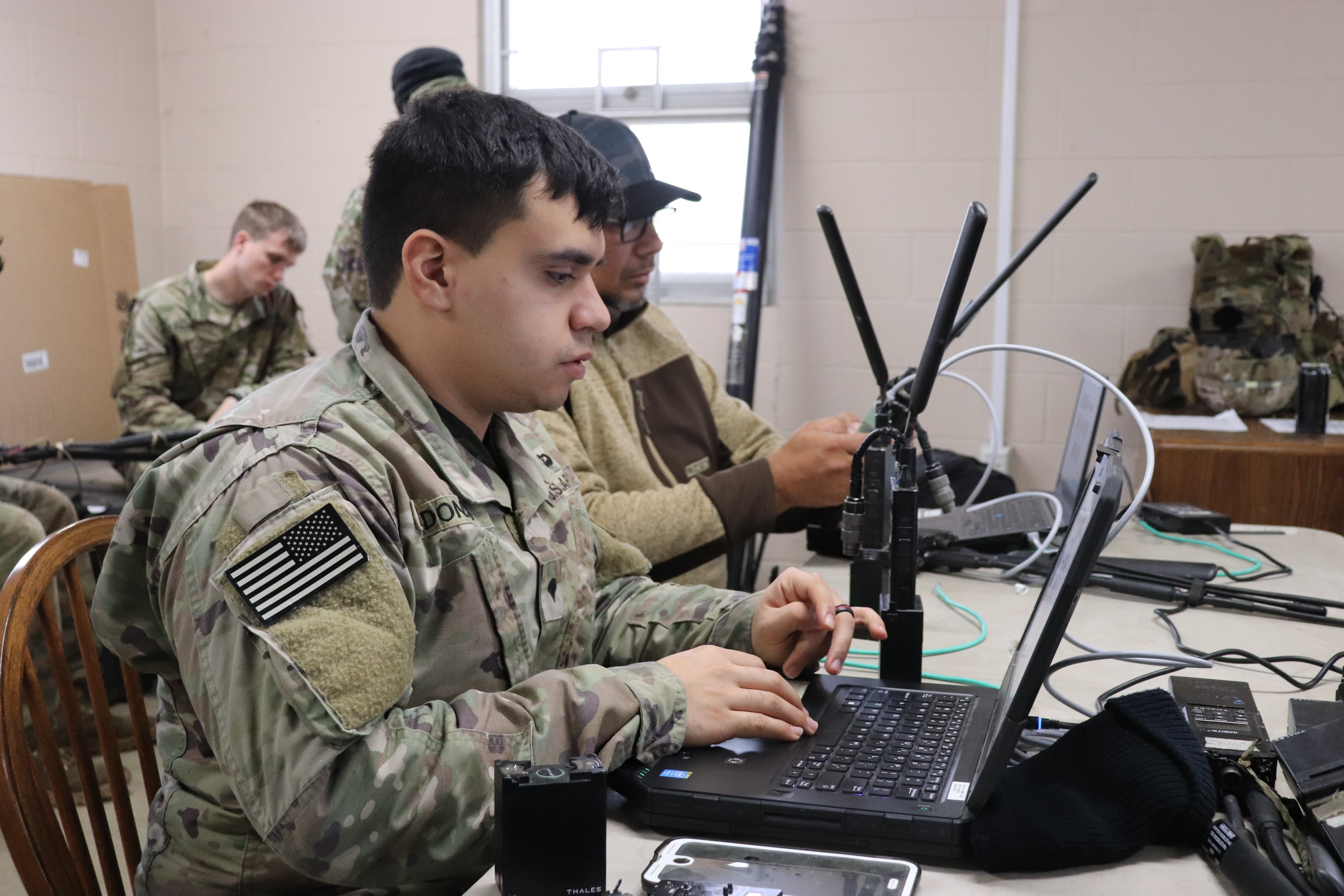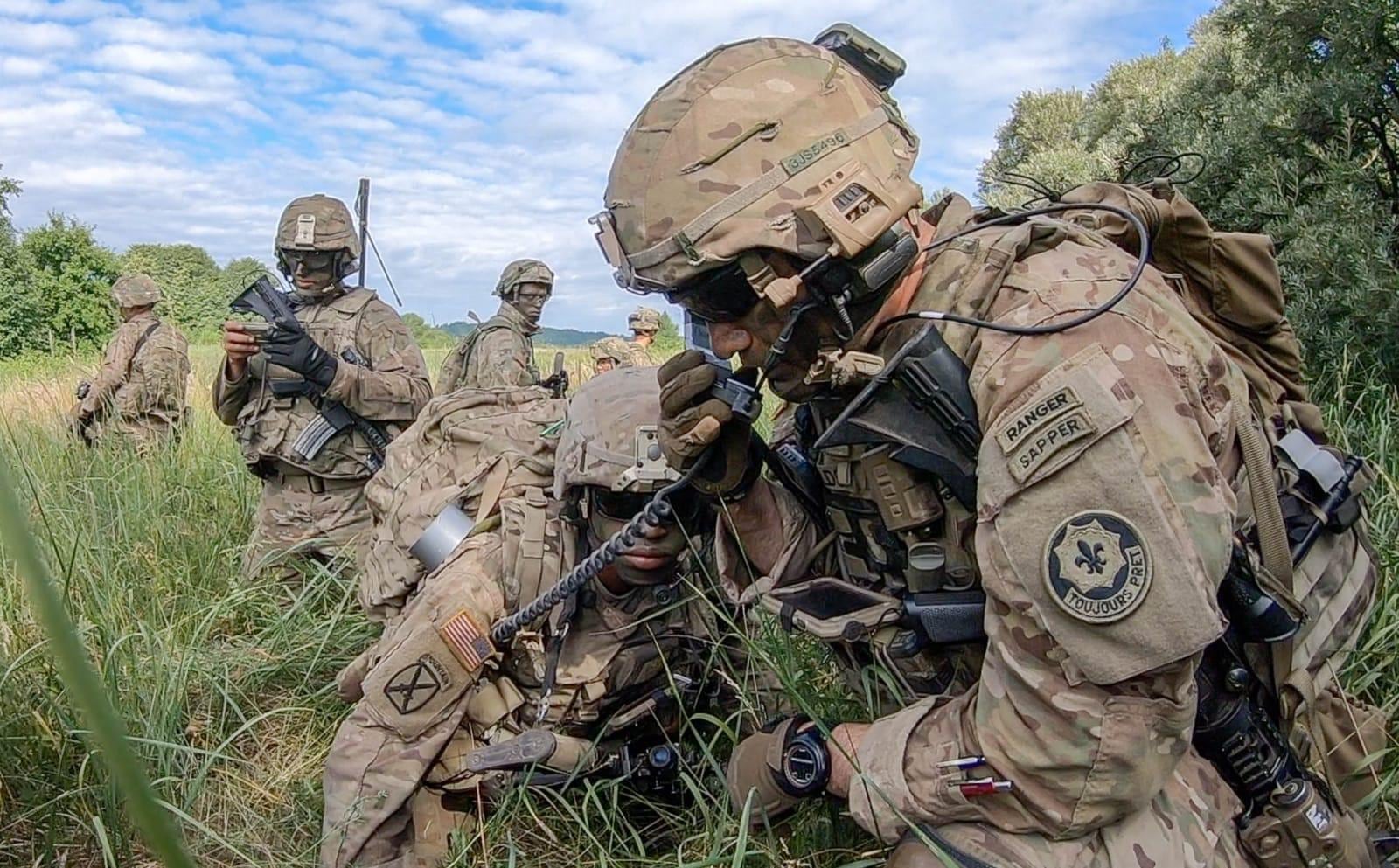An easy-to-use exoskeleton that could cut down or even eliminate soldier back injuries.
An artificial intelligence-enabled radio that finds the right frequency spectrum for clear communications, data transfer and deters incessant enemy jamming.
These are just two projects the Army hopes will see real progress as they team soldiers with university researchers, scientists and dedicated teams of developers in a new Army program dubbed, “Catalyst-Pathfinder.”
Dr. Arwen DeCostanza, with the Army’s Combat Capabilities Development Command, manages the program that has already paired soldiers from units in the XVIII Airborne Corps out of Fort Bragg, North Carolina, with researchers affiliated with Vanderbilt University.
RELATED

Universities in North Carolina and West Virginia are also in the mix for partnerships.
A version of the program began in March 2020 with Army Futures Command but has transitioned to a direct focus, for now, with the 82nd Airborne Division, also at Fort Bragg and the 101st Airborne Division, at Fort Campbell, Kentucky.
DeCostanza told Army Times recently that the early focus now is to team up universities close to Army units so soldiers can be involved in the very early stages of research.
Some of the problems they’re trying to solve are coming from a prioritized list of common tech or tactical challenges seen across multiple units. Other problems come directly from soldier submissions to the larger command.
“We’re really focused on gathering problems from the unit, and not necessarily from the highest generals that are in charge of the units,” DeCostanza said. “But from soldiers that are out in the field saying, ‘This is a problem. I want to work to solve this problem.’”

Soldiers are able to use a QR code to submit the problem they face and an assigned “innovation officer” within the unit reviews submissions before running them up the chain of command, she said.
On the other side, researchers in academia are working with the real-world constraints that soldiers and units deal with every day, DeCostanza said. Many research-based projects can come at a challenge conceptually and not hit the hurdles that the end-user has to confront until much later in the process.
One of the early projects that has carried over from the AFC pilot Catalyst program was the Soldier Assistive Bionic Exosuit for Resupply, or SABER. That project paired Vanderbilt with the 101st.
Researchers looked at data showing that more than 84,000 cases of back injuries were being diagnosed each year, the leading cause of injury in the Army.
Nearly a quarter of all musculoskeletal injuries reported were to the back, according to the program data. And 90 percent of those back injuries were due to overuse.
Starting in March 2021, soldiers at the 101st provided data on their strength and endurance limits with handling gear, especially with air assault missions identified as a key source of “overburdening and fatigue” that could lead to injuries.
SABER developed is a soft, lightweight device that form fits and does not need batteries.
Over a 12-month period, researchers are scheduled to evaluate physical performance during logistics activities such as loading gear or moving equipment. They’ll then work through the design and testing of prototypes before building and testing a final prototype, both at Fort Campbell and at the Joint Readiness Training Center at Fort Polk, Louisiana, according to the Catalyst release.

On another technology front, the program has taken what started as a challenge in the Defense Advanced Research Projects Agency and is putting soldiers in the mix to advance what radios are capable of doing.
Currently, a crowded radio frequency spectrum means lots of operator work to find the right spectrum, slow and long-running data transfer and vulnerability to jamming.
Xtremis is a company working with the Civil-Military Innovation Institute through Vanderbilt to solve the problem.
The Advanced Dynamic Spectrum Radio, ASDR, is an effort to use software-defined, AI-enabled radio technology to “sense and predict the local RF environment in real time.”
The device isn’t a new radio but instead a lightweight attachment to existing radios in the Army inventory. The ASDR would also prioritize communication traffic in the network based on radio and information type and continually adjust the network to optimize for the best error correction, modulation, frequency, bandwidth and power, according to an Army Research Lab statement.
Martin Wilson and Shane Van Wyngaardt, principal and technical leads for Xtremis, spoke with Army Times about the project.
Simply put, Wilson said, the project is about taking the current comms situation from “spectrum scarcity to spectrum abundance.”

Right now, he said, the spectrum is so congested with RF emitters at the tactical level, and enemy jamming, that radio operators are constantly challenged on getting through the traffic.
The automated radio tuning will help radios find the right spectrum to use. They estimate that the right solution could open up five times the bandwidth that’s currently available.
That would allow for better video transmission, a growing need in Multi-Domain Operations.
The specific challenge was part of a big-picture problem dating back to a DARPA challenge beginning in 2013. But Xtremis is tailoring their approach to what’s been recognized by operators in the 101st, Martin said.
Wyngaardt added that, on the technical side, working directly with the subject matter expert soldiers on the ADSR development gives researchers a “real-world understanding of what the problems are.”
Over the next six months, Xtremis will be running field trials to find the best hardware for the device. They’ll then identify how soldiers will be using the device and what measures they’ll need to evaluate the performance before developing command and control interfaces to work with existing platforms.
The team will then integrate legacy radios, develop protocols for network spectrum use and finalize the ADSR design to meet Army requirements, according to the ARL statement.
Todd South has written about crime, courts, government and the military for multiple publications since 2004 and was named a 2014 Pulitzer finalist for a co-written project on witness intimidation. Todd is a Marine veteran of the Iraq War.




